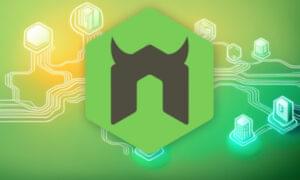The best applications are coded properly. This sounds like an obvious statement, but by ‘properly’, I mean that the code not only does its job well, but is also easy to add to, maintain and debug.
This “maintainable code” is a popular talking point among those involved with PHP and probably with other languages as well. There’s nothing worse than inheriting an application or needing to make changes to code that requires a lot of energy to decipher – you end up trawling through lines and lines of code that doesn’t make its purpose or intentions clear. Looking through unfamiliar code is much easier if it is laid out well and everything is neatly commented with details that explain any complicated constructs and the reasoning behind them.
In this article, I’ll explain why coding standards are important not only to the individual developer or development team, but to the script users as well.
The Problem
When we learn a new language, we usually begin to code in a specific style. In most cases, we’ll write in a style that we want, not one that has been suggested to us. But once we start to code using a particular style, like a spoken language dialect, it will become second nature — we’ll use that style in everything we create. Such a style might include the conventions we use to name variables and functions ($userName, $username or $user_name for example), and how we comment our work. Any style should ensure that we can read our code easily.
However, what happens when we start to code bigger projects and introduce additional people to help create a large application? Conflicts in the way you write your code will most definitely appear.
The Solution: a Coding Standards Document
A coding standards document tells developers how they must write their code. Instead of each developer coding in their own preferred style, they will write all code to the standards outlined in the document. This makes sure that a large project is coded in a consistent style — parts are not written differently by different programmers. Not only does this solution make the code easier to understand, it also ensures that any developer who looks at the code will know what to expect throughout the entire application.
Coding standards are great — but how do you decide which standards you want to apply, and how they will be defined? When you formulate your ideal coding style, you should think about these points:
- Can you actually read the code? Is it spaced out clearly?
- Do you separate blocks of code into ‘paragraphs’ so that different sections are easily defined?
- Are you using indentation to show where control structures (if, else, while and other loops) begin and end, and where the code within them is?
- Are your variable naming conventions consistent throughout the code and do they briefly describe that data that they’ll contain?
- Are functions named in accordance with what they do?
Once you’ve considered those points, you can begin to draft your coding standards. Consult with your team members (if any) and compare how they code to your own style — you shouldn’t force total change upon everyone. Compromise and incorporate elements of everyone’s style. If someone has been coding in a specific way for a long time, it will take a while for that developer to change to the new method. Developers will likely adopt the style gradually, just as an accent develops over time.
Create Maintainable Code
As we said at the beginning of this discussion, you want to create maintainable code. If you stop developing a project, return to it several months later, or hand development over to someone else, you (and other developers) want to be able to understand what’s going on in the code. We keep mentioning ‘readability’, but what actually constitutes “readable code”? The answer to this question will obviously differ for each programmer, but I believe there are some common fundamentals, which we’ll discuss now. I’ve used PHP to outline various styles here, but similar ideas will apply to other languages:
// Method 1
if (condition)
function1($a, $b, $c);
for ($i < 7 && $j > 8 || $k == 4)
a($i);
// Method 2
if (condition)
{
get_user($id, $username, $key);
}
for (($i < 7) && (($j < 8) || ($k == 4)))
{
display_graph($value);
}Here are two ways we might write the same code — you can see the difference between easily readable code and complex, but more quickly written code. Even if you don’t know much PHP, you probably noted that the second snippet is much tidier and easier to understand. I’ve named functions using a verb (get, display), used variable names that describe the data they contain, and used brackets to help show what the for condition is. Not only that, but I’ve also included the braces for the control structures and used indentation to show which code appears under each structure.
Your own idea of readable code might differ slightly from this, but I’d bet that every PHP coder could easily understand what’s going on in the second example. The first example, however, takes extra time to comprehend. Sacrificing extra lines and whitespace will make a noticeable difference to the layout of the code. As you develop coding standards, try to ensure that they allow anyone to work out the code in future!
Different Standards
PHP example code and Pear modules (etc.) generally use the Pear Coding Standards, which are slightly different from the method I used above.
I have my own personal coding standards, which I adopted from the phpBB Coding Standards because I liked the way they were written. For example, in my own standards, I put the braces for control structures on a new line:
if (condition)
{
get_user($id, $username, $key);
}But in the Pear standards, the first brace is on the same line as the if (condition):
if (condition) {
get_user($id, $username, $key);
} The standards you choose are all down to personal preference and what you find easiest to code and read. To get you started, I’ve included a copy of my own standards for you to download. Happy coding!
Frequently Asked Questions about Coding Standards
Why are coding standards important in software development?
Coding standards are crucial in software development for several reasons. Firstly, they ensure consistency across the codebase, making it easier for developers to read, understand, and maintain the code. Secondly, they help in reducing the risk of errors and bugs, as they enforce best practices in coding. Thirdly, they facilitate collaboration among developers, as everyone follows the same set of rules and guidelines. Lastly, they contribute to the overall quality of the software, leading to more robust and reliable applications.
How do coding standards improve code readability?
Coding standards improve code readability by enforcing a consistent style and structure across the codebase. This includes rules on indentation, naming conventions, use of comments, and code organization. By following these rules, developers can easily understand the code, navigate through it, and make changes when necessary. This is particularly important in large projects with multiple developers, where code readability can significantly impact productivity and efficiency.
What are some common coding standards in software development?
Common coding standards in software development include naming conventions (such as using camelCase for variables and PascalCase for classes), indentation and formatting rules (like using spaces instead of tabs), comment guidelines (such as commenting every function and complex code block), and code organization principles (like keeping functions short and simple, and grouping related functions together). These standards may vary depending on the programming language and the specific needs of the project.
How can I enforce coding standards in my team?
Enforcing coding standards in a team can be achieved through several methods. One way is to use a code linter or a static code analysis tool, which can automatically check the code for violations of the standards. Another way is to conduct regular code reviews, where team members review each other’s code and provide feedback. Additionally, it’s important to provide training and resources to the team members about the importance of coding standards and how to follow them.
Can coding standards vary between different programming languages?
Yes, coding standards can vary between different programming languages. Each language has its own set of best practices and conventions, which are often reflected in its coding standards. For example, the coding standards for Python, known as PEP 8, are different from the standards for Java, known as the Java Code Conventions. However, there are also some universal principles that apply to all languages, such as keeping the code clean, simple, and well-documented.
What is the role of coding standards in code quality?
Coding standards play a key role in maintaining code quality. They enforce best practices in coding, which lead to more reliable and efficient code. They also help in preventing bugs and errors, as they often include rules on error handling and edge cases. Moreover, they contribute to code maintainability, as they ensure that the code is well-structured and easy to understand. Therefore, following coding standards is a crucial part of quality assurance in software development.
How do coding standards contribute to software maintainability?
Coding standards contribute to software maintainability by ensuring that the code is well-structured, consistent, and easy to understand. This makes it easier for developers to navigate through the code, understand its logic, and make changes when necessary. It also reduces the risk of introducing new bugs when modifying the code, as the standards enforce safe coding practices. Therefore, coding standards are a key factor in the long-term success of a software project.
Are there any drawbacks to using coding standards?
While coding standards are generally beneficial, they can also have some drawbacks. For instance, they can be seen as restrictive and limit the creativity of developers. They can also be time-consuming to implement and enforce, especially in large projects. However, these drawbacks are often outweighed by the benefits of coding standards, such as improved code quality, readability, and maintainability.
How can I learn more about coding standards for a specific programming language?
To learn more about coding standards for a specific programming language, you can refer to the official documentation of the language, which often includes a section on coding conventions or style guide. You can also look for resources online, such as tutorials, articles, and forums, where experienced developers share their knowledge and best practices. Additionally, there are books and courses available that focus on coding standards and best practices in software development.
Can coding standards evolve over time?
Yes, coding standards can evolve over time. As programming languages and development practices evolve, so do the best practices and conventions associated with them. Therefore, it’s important to regularly review and update the coding standards to ensure that they reflect the current state of the art. This can be done through a collaborative process involving all the members of the development team, to ensure that the standards are relevant and effective.



































































































